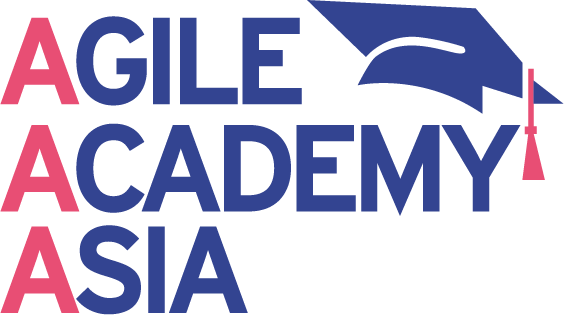
Unlock the Secrets of Agile Transformation: A Step-by-Step Guide
Agile transformations are widespread in businesses of all sizes. In short, an agile transformation is a process of changing the way a business operates to be more agile or responsive to customer needs and demands. An agile transformation aims to improve the speed of execution and increase customer satisfaction.
Agile transformations typically involve a shift in how the company is organized and managed. This shift typically includes adopting agile project management principles, such as scrum and Kanban, as well as using agile tools and software. The main focus of an agile transformation is to create an environment that encourages collaboration, innovation, and agility.
How to start?
You start an agile transformation by assessing the organization’s current state. This assessment looks at the processes and procedures used, the organizational structure, and the organization’s culture. Once these elements are evaluated, the next step is to create a plan to achieve the desired outcome. This plan should include the desired objectives, the timeline for the transformation, and the necessary resources.
Then implement the plan. This can involve process improvements, organizational changes, and adopting new tools and technologies. The changes must be implemented in a way that is consistent with the organization’s culture, values, and goals.

Pilot: Learning from Experience
A good approach for an agile transformation is to start small with a pilot. During an intensive pilot guided by agile professionals, the organization can inspect and adapt daily to create the best practice for their organization. This approach allows the organization to quickly identify and address any challenges during the transformation and assess the pilot’s overall success. After the pilot has been completed, the organization can scale up the agile transformation to the rest of the organization. This approach allows the organization to learn from their mistakes and successes in the pilot and to create a more successful and effective agile transformation.
This approach is straightforward and low risk. We don’t change the whole organization at once. You must respect the organization’s culture, values, and goals and start small. Taking a gradual approach makes it easier to make the necessary changes without causing too much disruption. Additionally, getting feedback from the team and stakeholders and making adjustments as needed is easier. This approach allows for better results in the end.
Scaling Up Your Agile Transformation
After a successful pilot, it’s essential to take the right steps to ensure the process can be scaled up. Here are some tips for scaling up your Agile transformation:
Establish standard processes. Before you begin the scaling process, it’s important to have a set of standard processes in place. This will ensure that everyone in the organization is working from the same playbook and that the transformation is being implemented consistently across the organization.
Create an Agile governance team. An Agile governance team should be established to oversee the transformation and ensure it moves in the right direction. This team should be made up of members from various departments and should be responsible for tracking progress, identifying areas for improvement, and helping to ensure that the transformation is successful.

Train and educate your teams. The success of the transformation will depend on the team’s ability to use the new Agile methods properly. Training and education are essential to ensure that everyone is familiar with the process and can use it effectively.
Implement Agile metrics. Metrics are a great way to measure the success of the transformation. By measuring performance and progress, you can identify areas for improvement and ensure that the Agile process is being used correctly.
What happens when an agile transformation comes to an end?
The completion of specific objectives, such as the successful launch of a new product or the achievement of a particular performance goal, often marks the end of an agile transformation. However, agile transformations are never truly “finished”. Agile working is an ongoing process of inspection and adaptation. Even if a major project has been completed, teams should be open to further improvement and refinement.
At the end of an agile transformation, it’s essential to take the time to assess the success of the process. Teams should identify areas where they were successful, as well as areas that need more attention in the future. This assessment should include metrics such as customer satisfaction, team morale, and overall ROI.
An agile transformation requires more than just implementing Agile methods and practices. It is essential that organizations get Agile guidance and coaching to ensure that the transformation is successful. This guidance and coaching should focus on helping stakeholders understand Agile principles, practices, and values and providing processes and tools to support their agile transformation journey. It should highlight the importance of collaboration, communication, and continuous learning. With the help of Agile guidance and coaching, organizations can create an agile environment that is more responsive to customer needs and is better equipped to handle change.
Agile Transformation:
Develop a Vision: Establish an overall vision for the agile transformation and set specific goals for the transformation.
Assess Current State: Gather data to assess the organization’s current state.
Form a Steering Team: Create a steering team to oversee the transformation and ensure it meets its goals.
Create an Agile Framework: Develop an agile framework that outlines the processes and tools that will be used to facilitate the transformation.
Educate Team Members: Educate team members on the agile framework and how it can help them be successful.
Establish an Agile Working Environment: Establish an agile working environment that encourages collaboration and communication (start small with a pilot team).
Measure Progress: Establish metrics to measure progress and success throughout the transformation.
Monitor and Adjust: Monitor progress and adjust the framework and processes as needed.
Follow ups (Scaling):
Create an Agile Culture: Establish an agile culture that encourages learning, experimentation, and continuous improvement.
Train Leaders: Train leaders to be agile coaches and mentors to team members.
Create a Support Network: Establish a support network of agile experts that can provide guidance and advice during the transformation.
Foster Collaboration: Foster collaboration and communication between teams and stakeholders.
Create Feedback Loops: Create feedback loops to allow team members to give and receive feedback on their progress.
Establish Retrospectives: Establish retrospectives to allow team members to reflect on their progress and identify areas of improvement.
Scale Agile Practices: Scale agile practices throughout the organization and ensure they are adopted across all levels.
Effective Agile Transformation Guidance
Agile transformations can only be successful with the right guidance and coaching in place. An experienced and knowledgeable coach or mentor must ensure that everyone understands and applies Agile principles, practices, and values. Even if Agile methods are adopted, continuous guidance and coaching are still needed to ensure that the organization can handle changes and remain agile. Without this, the transformation is unlikely to be successful.
Throughout that journey, you must ensure that the organization can progress through the different Agile maturity levels and get the most out of the transformation. This guidance should focus on helping the organization understand and apply different Agile methods and practices, as well as helping to create an organizational culture that supports agility and collaboration. With the right guidance and coaching, organizations can gain the most benefit from their Agile transformation and move through the various maturity levels.

Agile Academy Asia
The Academy’s coaching and guidance help companies understand and apply Agile principles, practices, and values to their own projects. With the help of experienced and knowledgeable coaches and mentors, Agile Academy Asia ensures that the organization can handle changes and remain agile throughout the transformation process. The coaching and guidance also focus on creating an organizational culture that supports collaboration and agility.
The Academy’s training and development opportunities help companies progress through different Agile maturity levels, gaining the most benefit from their Agile transformation. The courses, seminars, and workshops provide a comprehensive understanding of Agile and the tools and techniques used to apply it.
Agile Academy Asia provides invaluable help for companies looking to quickly and effectively deliver high-quality products using Agile. The coaching, guidance, and training opportunities the Academy offers make it the ideal option for companies looking to make the most of their Agile transformation.
Author:
Pjotr Steinmetz
Founder & Owner
Pjotr Steinmetz is a leading expert in Agile principles, with a deep understanding of how to successfully transition companies of all sizes into Agile frameworks. As the founder of Agile Academy Asia, Pjotr provides lectures, training, workshops and consulting sessions on the mindset of Agile and on various Agile–driven projects. He is also a Mentor at different accelerators, incubators and universities, where he trains and guides students and Startups in the benefits of Agile. With extensive experience in the Netherlands and Asia, Pjotr is at the forefront of helping companies in their Agile journey.

Book a free 30 minutes consultation with him to talk about Agile training, consulting, and transformations.
